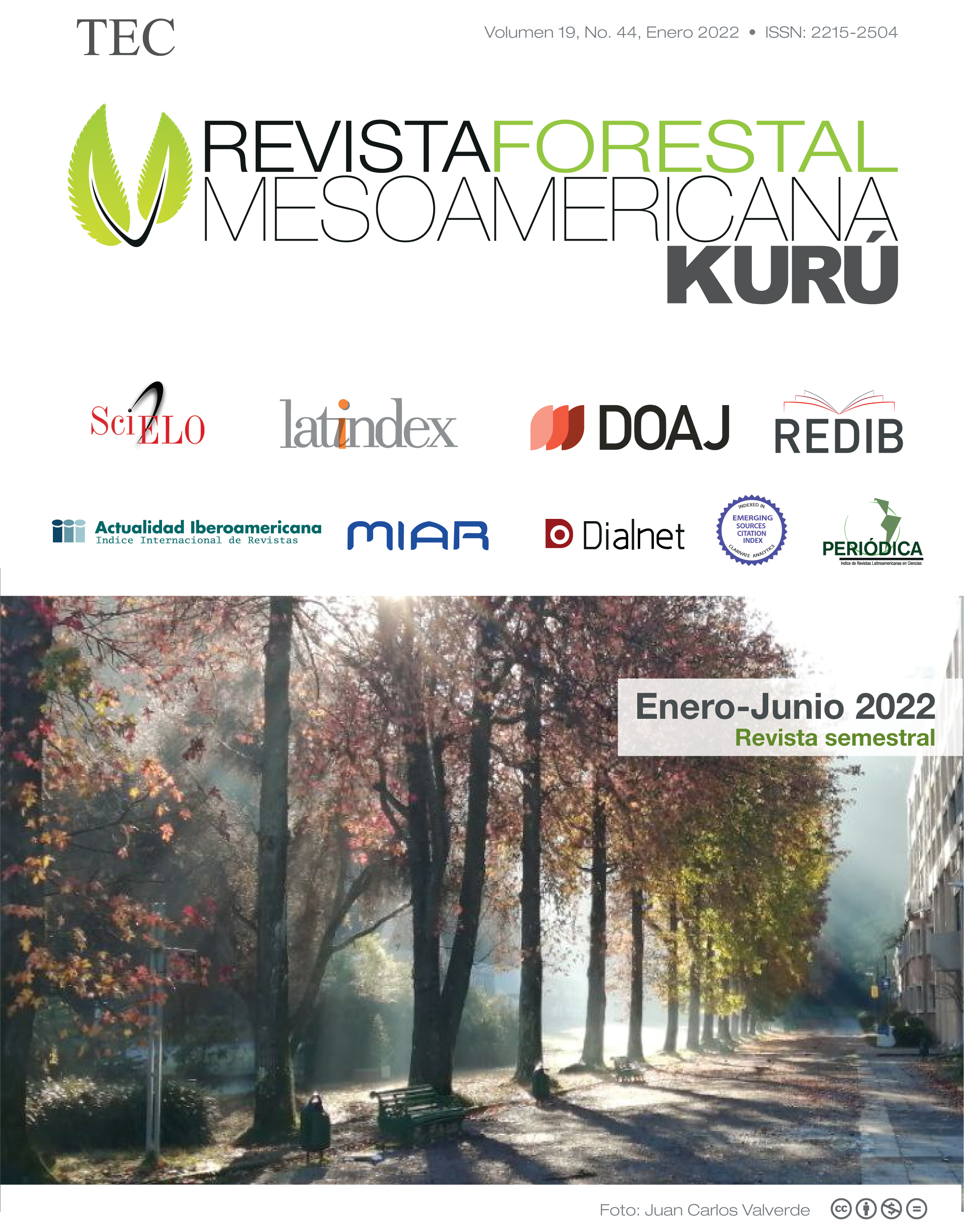Fruit - seed morphology, seedling phenology and initial growth of nursery plants of the manglillo (Aspidosperma cruentum Woodson) from the Osa Peninsula, Costa Rica
Main Article Content
Abstract
The morphological and descriptive analysis of fruits, seeds, and seedlings is a useful tool for their identification and management, as well as for ecological studies of vegetation and production in forest nurseries. A morphological description of Aspidosperma cruentum Woodson was made in different stages of development, to identify initial characteristics of fruits, seeds, seedlings, and plants in the nursery. The study was carried out both in the La Amapola nursery, as well as in the forest nursery of the School of Environmental Sciences of the National University of Costa Rica, located in the Osa peninsula and Heredia, respectively. A number of 220 fruits with ages between 87 and 207 days were evaluated, the number of seeds, weight, shape, as well as other morphological characteristics, were quantified. A germination test was carried out using a suspension treatment in water and a control, later the seedlings were evaluated and described in the nursery. The seeds of A. cruentum do not require pregerminative treatment, reporting statistically significant differences in both treatments. The seeds measured an average of 8.30 cm in diameter with the wing and 2.64 cm in the embryo. An average of 18 seeds per fruit was recorded, of which a germination percentage of 75% was obtained. The seeds located at the ends of the fruit and with lower weight reported a higher germination percentage. The seedlings are characterized by being phanerocotilar and having epigeal germination. The incorporation of vermicompost in the substrate significantly influenced the initial growth of plants, increasing the diameter, height, and production of leaves.
Article Details

This work is licensed under a Creative Commons Attribution-NonCommercial-NoDerivatives 4.0 International License.
Al enviar un artículo a la Revista Forestal Mesoamericana kurú (RFMK), los autores ceden los derechos patrimoniales a la editorial de la RFMK una vez su manuscrito haya sido aprobado para publicación, autorizando a la RFMK a editarlo, reproducirlo, distribuirlo, y publicarlo en formato físico y/o electrónico, incluido Internet. La titularidad de los derechos morales sobre los trabajos objeto de esta cesión seguirá perteneciendo a los autores.
Este obra está bajo una Licencia Creative Commons Atribución-NoComercial-SinDerivadas 4.0 Unported.


